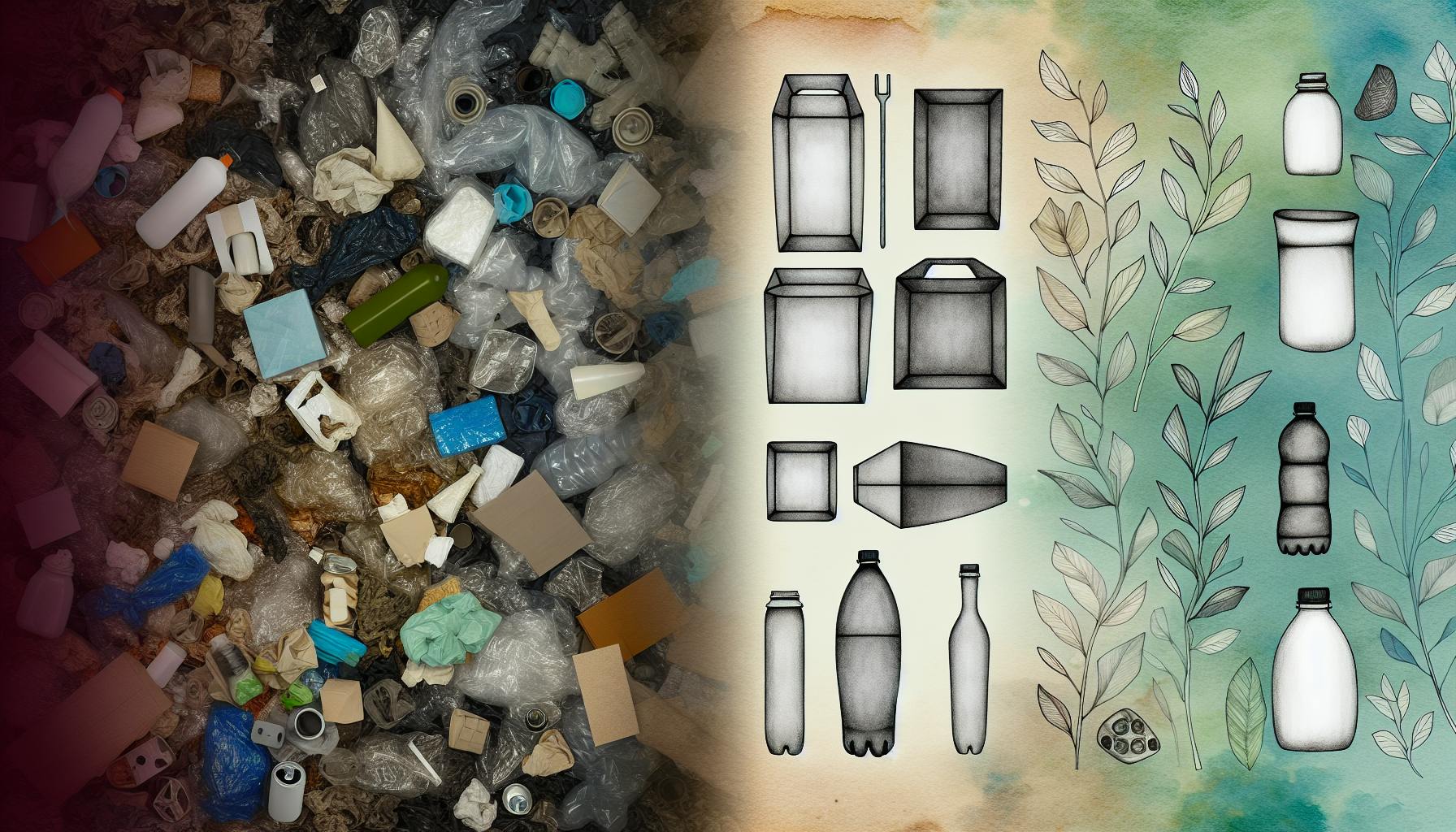Microplastic pollution is a growing environmental concern, harming aquatic life and contaminating the food chain. Nanotechnology offers promising solutions to remove microplastics from water:
1. Magnetic Peroxidase Nanozyme
- Uses iron oxide nanoparticles to break down microplastics
- Nanoparticles have magnetic properties for easy removal
- Highly efficient, wide range of microplastic removal
- Drawbacks: Nanoparticle aggregation, interference from contaminants, scalability issues
2. Nanomaterial-based Adsorbents
- Employs nanomaterials to adsorb and trap microplastics
- High adsorption capacity, flexibility, cost-effective
- Limitations: Scalability, interference from contaminants, regeneration and reuse challenges
3. Electrochemical Techniques
- Removes microplastics using electric current
- Methods: Electrocoagulation, electroadsorption, electrokinetic separation, electrochemical degradation
- Easy implementation, high efficiency, eco-friendly
- Drawbacks: Critical parameter control, scalability, energy consumption
Quick Comparison:
| Method | Approach | Benefits | Limitations |
|---|---|---|---|
| Magnetic Peroxidase Nanozyme | Iron oxide nanoparticles break down microplastics | High efficiency, wide range, easy recovery | Nanoparticle aggregation, contaminant interference, scalability |
| Nanomaterial-based Adsorbents | Nanomaterials adsorb microplastics | High adsorption capacity, flexibility, cost-effective | Scalability, contaminant interference, regeneration/reuse |
| Electrochemical Techniques | Electric current removes microplastics | Easy implementation, high efficiency, eco-friendly | Critical parameters, scalability, energy consumption |
While each method has its strengths and weaknesses, nanotechnology holds great promise for microplastic removal from water environments. Further research and development are necessary to overcome current challenges and scale up these methods for real-world applications.
1. Magnetic Peroxidase Nanozyme
Approach
Magnetic peroxidase nanozymes are a type of nanotechnology-based solution for microplastic removal. This approach uses iron oxide nanoparticles that can break down microplastics. These nanoparticles have magnetic properties, making them easy to remove from water using magnets.
How it Works
| Step | Description |
|---|---|
| 1 | Iron oxide nanoparticles are added to the water containing microplastics. |
| 2 | The nanoparticles break down the microplastics using their peroxidase-like activity. |
| 3 | The magnetic properties of the nanoparticles allow for easy removal from the water using magnets. |
Advantages
- High efficiency: Magnetic peroxidase nanozymes can remove microplastics from water efficiently.
- Wide range of microplastics: This approach can break down various types of microplastics.
- Easy recovery: The nanoparticles can be easily recovered from the water using magnets.
- Non-toxic and environmentally friendly: This approach is safe for the environment and human health.
Limitations
- Nanoparticle aggregation: The nanoparticles may clump together in certain water conditions, reducing their effectiveness.
- Interference from contaminants: The presence of other contaminants in the water may affect the peroxidase-like activity of the nanoparticles.
- Scalability: Further research is needed to scale up this approach for large-scale microplastic removal applications.
2. Nanomaterial-based Adsorbents
Approach
Nanomaterial-based adsorbents are a type of nanotechnology solution for microplastic removal. This approach uses various nanomaterials to adsorb microplastics from water. These nanomaterials have high surface areas, ease of functionalization, and high affinity toward various pollutants, making them effective adsorbents.
How it Works
Nanomaterial-based adsorbents work by attracting and trapping microplastics in water. The high surface area and functionalization of these nanomaterials enable them to capture microplastics efficiently.
Advantages and Limitations
| Advantages | Description |
|---|---|
| High adsorption capacity | Nanomaterial-based adsorbents can remove microplastics from water efficiently. |
| Efficient removal | These adsorbents can remove microplastics even at low concentrations. |
| Flexibility | Nanomaterial-based adsorbents can be tailored to target specific types of microplastics. |
| Cost-effective | This approach is potentially cost-effective compared to other microplastic removal methods. |
| Limitations | Description |
|---|---|
| Scalability | Further research is needed to scale up this approach for large-scale microplastic removal applications. |
| Interference from contaminants | The presence of other contaminants in the water may affect the adsorption capacity of the nanomaterials. |
| Regeneration and reuse | The regeneration and reuse of nanomaterial-based adsorbents need to be explored to make this approach more sustainable. |
3. Electrochemical Techniques
Approach
Electrochemical techniques are a promising method for removing microplastics from water. This approach uses electrocoagulation, electroadsorption, electrokinetic separation, and electrochemical degradation to capture and eliminate microplastics.
How it Works
Electrochemical techniques work by using an electric current to remove microplastics from water. This can be done through various methods, including:
| Method | Description |
|---|---|
| Electrocoagulation | Uses an electric current to remove microplastics by coagulating them into larger particles. |
| Electroadsorption | Uses an electric current to adsorb microplastics onto a surface. |
| Electrokinetic Separation | Uses an electric current to separate microplastics from water based on their size and charge. |
| Electrochemical Degradation | Uses an electric current to break down microplastics into smaller, harmless particles. |
Advantages and Limitations
| Advantages | Description |
|---|---|
| Easy to implement | Electrochemical techniques are relatively easy to set up and operate. |
| High efficiency | These methods have been shown to be highly effective in removing microplastics from water. |
| Eco-friendly | Electrochemical techniques do not require the use of harsh chemicals or energy-intensive processes. |
| Limitations | Description |
|---|---|
| Critical parameters | The effectiveness of electrochemical methods can be influenced by factors such as plastics' properties, current density, and electrolytes. |
| Scalability | Further research is needed to scale up electrochemical techniques for large-scale microplastic removal applications. |
By understanding the benefits and limitations of electrochemical techniques, researchers and practitioners can work towards developing more effective and efficient methods for microplastic removal.
sbb-itb-1dc3f59
Pros and Cons Summary
The following table summarizes the three nanotechnology methods for microplastic removal, highlighting their approaches, key benefits, and limitations:
| Method | Approach | Benefits | Limitations |
|---|---|---|---|
| Magnetic Peroxidase Nanozyme | Uses iron oxide nanoparticles to break down microplastics | - High efficiency - Wide range of microplastics - Easy recovery |
- Nanoparticle aggregation - Interference from contaminants - Scalability |
| Nanomaterial-based Adsorbents | Employs nanomaterials to adsorb microplastics | - High adsorption capacity - Flexibility - Cost-effective |
- Scalability - Interference from contaminants - Regeneration and reuse |
| Electrochemical Techniques | Uses electric current to remove microplastics | - Easy implementation - High efficiency - Eco-friendly |
- Critical parameters - Scalability - Energy consumption |
This table provides a concise comparison of the three nanotechnology methods, enabling informed decision-making for microplastic removal applications.
Detailed Comparison
In this section, we will compare the three nanotechnology methods for microplastic removal in more detail.
Magnetic Peroxidase Nanozyme vs. Nanomaterial-based Adsorbents
| Method | Approach | Advantages | Limitations |
|---|---|---|---|
| Magnetic Peroxidase Nanozyme | Breaks down microplastics using iron oxide nanoparticles | High efficiency, wide range of microplastic removal, easy recovery | Nanoparticle aggregation, interference from contaminants, scalability |
| Nanomaterial-based Adsorbents | Adsorbs microplastics using nanomaterials | High adsorption capacity, flexibility, cost-effective | Scalability, interference from contaminants, regeneration and reuse |
Both methods have shown high efficiency in removing microplastics from water. However, they differ in their approaches. The magnetic peroxidase nanozyme method has an advantage in terms of its wide range of microplastic removal capabilities, but it faces challenges related to nanoparticle aggregation and interference from contaminants. On the other hand, nanomaterial-based adsorbents offer flexibility and cost-effectiveness, but their scalability and regeneration/reuse remain concerns.
Electrochemical Techniques vs. Magnetic Peroxidase Nanozyme
| Method | Approach | Advantages | Limitations |
|---|---|---|---|
| Electrochemical Techniques | Removes microplastics using electric current | Easy implementation, high efficiency, eco-friendly | Critical parameters, scalability, energy consumption |
| Magnetic Peroxidase Nanozyme | Breaks down microplastics using iron oxide nanoparticles | High efficiency, wide range of microplastic removal, easy recovery | Nanoparticle aggregation, interference from contaminants, scalability |
Electrochemical techniques and the magnetic peroxidase nanozyme method share some similarities in their approaches, as both involve the use of external agents to remove microplastics. However, electrochemical techniques have an advantage in terms of their ease of implementation and eco-friendliness, but they require critical parameters to be controlled, and their scalability and energy consumption are concerns. The nanozyme method, on the other hand, offers high efficiency and a wide range of microplastic removal capabilities, but it faces challenges related to nanoparticle aggregation and interference from contaminants.
Nanomaterial-based Adsorbents vs. Electrochemical Techniques
| Method | Approach | Advantages | Limitations |
|---|---|---|---|
| Nanomaterial-based Adsorbents | Adsorbs microplastics using nanomaterials | High adsorption capacity, flexibility, cost-effective | Scalability, interference from contaminants, regeneration and reuse |
| Electrochemical Techniques | Removes microplastics using electric current | Easy implementation, high efficiency, eco-friendly | Critical parameters, scalability, energy consumption |
Nanomaterial-based adsorbents and electrochemical techniques differ significantly in their approaches to microplastic removal. The adsorbent-based method has an advantage in terms of its flexibility and cost-effectiveness, but its scalability and regeneration/reuse remain concerns. Electrochemical techniques, on the other hand, offer ease of implementation and eco-friendliness, but they require critical parameters to be controlled, and their scalability and energy consumption are concerns.
In conclusion, each of the three nanotechnology methods for microplastic removal has its unique strengths and weaknesses. A thorough understanding of these methods and their applications is crucial for selecting the most suitable approach for specific microplastic removal scenarios.
Conclusion
In conclusion, the three nanotechnology methods for microplastic removal - Magnetic Peroxidase Nanozyme, Nanomaterial-based Adsorbents, and Electrochemical Techniques - each have their strengths and weaknesses.
Key Takeaways
| Method | Strengths | Weaknesses |
|---|---|---|
| Magnetic Peroxidase Nanozyme | Wide range of microplastic removal, easy recovery | Nanoparticle aggregation, interference from contaminants, scalability |
| Nanomaterial-based Adsorbents | High adsorption capacity, flexibility, cost-effective | Scalability, interference from contaminants, regeneration and reuse |
| Electrochemical Techniques | Easy implementation, high efficiency, eco-friendly | Critical parameters, scalability, energy consumption |
Despite these limitations, nanotechnology holds great promise for microplastic removal from water environments. Further research and development are necessary to overcome the current challenges and to scale up these methods for real-world applications.
By understanding the strengths and weaknesses of each method, researchers and policymakers can make informed decisions about the most suitable approaches for specific microplastic removal scenarios, ultimately contributing to a cleaner and healthier environment.


